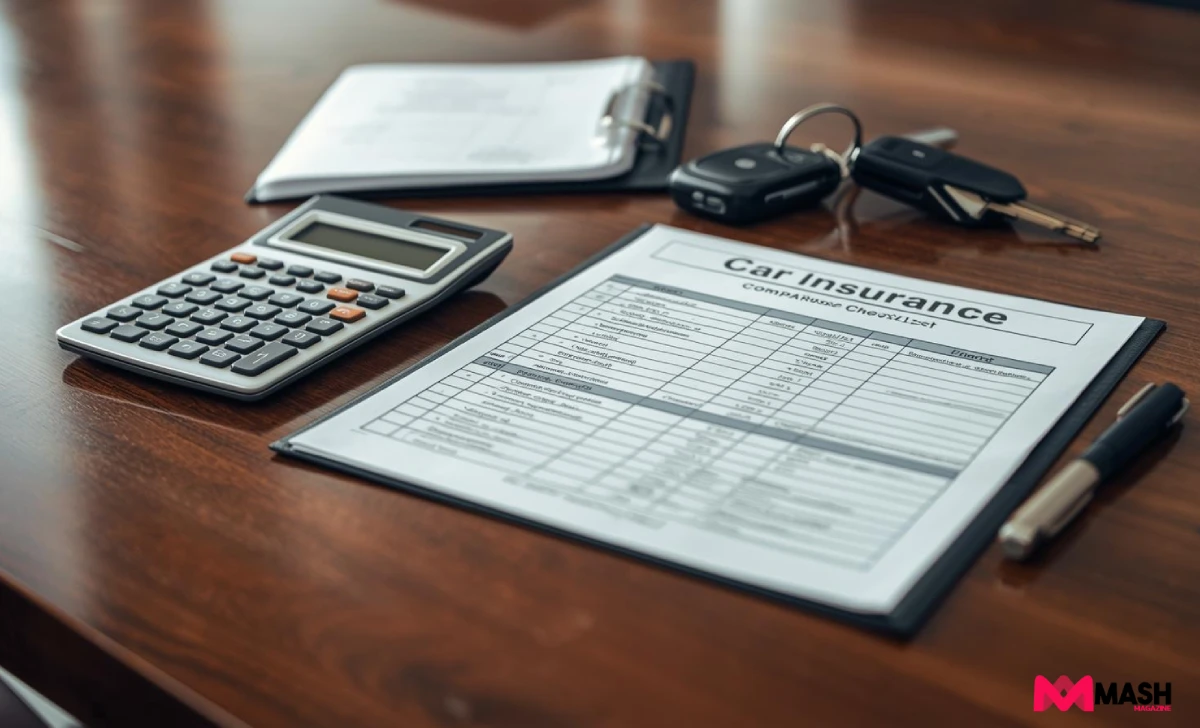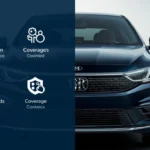Getting car insurance in Australia can feel confusing. You face dozens of companies, wildly different prices, and coverage options that sound nearly identical. The wrong choice could cost you hundreds of dollars each year or leave you underinsured when you need help most.
This guide will show you exactly how to compare car insurance quotes in Australia, understand what drives your premiums up or down, and choose the best deal for your needs. You’ll walk away with a simple checklist and real examples to make your decision easier.
Why Comparing Car Insurance Quotes Matters
You might think all car insurance policies are basically the same. They’re not. Prices and coverage vary dramatically between providers, even for identical cars and drivers.
1. Huge Price Differences Across Insurers
The same comprehensive policy for a 2020 Toyota Corolla in Melbourne can range from $800 to $1,600 per year.
That’s a $800 difference just by choosing a different insurer. According to recent industry data, Australian drivers who compare at least three quotes save an average of $427 annually compared to those who auto-renew or pick the first option they see.
2. Different Policies, Same Car
Two policies might both be labelled “comprehensive,” but one includes roadside assistance and hire car cover while the other charges extra for both. One might have a $700 standard excess, another $400.
One covers hail damage without question, another requires you to prove your car wasn’t parked outside during a storm warning. The devil lives in the details.
What Affects Your Car Insurance Quote in Australia
Your premium isn’t random. Insurers use specific factors to calculate risk and price. Understanding these helps you know where you can save money and where you can’t.
1. Your Age, Driving History, and Location
Young drivers under 25 pay significantly more because statistics show they’re involved in more accidents. If you’ve made claims in the past five years, expect higher premiums. Your postcode matters too.
Sydney’s CBD costs more to insure than rural New South Wales because of higher theft rates and accident frequency. Brisbane suburbs near the coast pay more during storm season.
2. The Car You Drive and How You Use It
A performance car like a Subaru WRX costs more to insure than a Toyota Camry. Older cars with fewer safety features often mean higher premiums because injuries cost insurers more than vehicle repairs.
If you drive to work daily in peak traffic, you’ll pay more than someone who only uses their car on weekends. Business use adds another layer of risk and cost.
3. Policy Type and Excess Amount
Comprehensive insurance costs the most but covers damage to your car, other vehicles, and property. Third-party fire and theft only covers your car if it’s stolen or burned, plus damage you cause to others.
Third-party property only covers damage you cause to other people’s property and vehicles. Choosing a higher voluntary excess reduces your premium but means you pay more out of pocket if you claim.
Step-by-Step: How to Compare Car Insurance Quotes in Australia
Comparing quotes doesn’t need to take hours. Follow this process to get accurate quotes you can actually compare.

1. Gather Key Details Before You Start
You’ll need your driver’s licence number, car registration, agreed or market value preference, annual kilometres driven, where you park overnight, and your claims history for the past five years. Having this ready speeds up the quote process and ensures you’re comparing like with like across insurers.
2. Use Online Comparison Tools and Know Their Limits
Comparison websites like Compare the Market, Finder, and iSelect let you enter your details once and receive multiple quotes. They save time and give you a quick overview of price ranges. But they don’t always include every insurer.
Some companies like AAMI or NRMA might offer better direct deals than what appears on comparison sites. Get at least one direct quote from a major insurer to check.
3. Review Policy Inclusions and Exclusions
Don’t just compare the bottom-line price. Check what’s actually covered. Does the policy include windscreen replacement without affecting your no-claim bonus? Is there cover for personal belongings stolen from your car? What about towing after an accident?
Some policies exclude flood damage unless you pay extra. Others won’t cover you if your car is modified, even with just a tow bar or roof racks.
Checklist: What to Look for When Comparing Quotes
Use this checklist while reviewing quotes. It helps you spot the real value beyond the headline price.
1. Coverage Type and Limits
Make sure every quote you’re comparing offers the same coverage level. A cheap comprehensive policy might only cover $5,000 for windscreen damage while another covers unlimited windscreen repairs.
One policy might cap hire car cover at 14 days, another at 21 days. Check whether the policy covers you for market value or agreed value. Agreed value costs more but guarantees a set payout amount.
2. Excess and Optional Extras
Every policy has a basic excess, often $500 to $700. You can add voluntary excess to lower your premium. Run the numbers. Saving $150 per year by adding $500 voluntary excess means it takes over three years to break even if you claim once.
Optional extras like roadside assistance might cost $80 through your insurer but $140 as a standalone service. Hire car cover matters if you rely on your car for work. Rental excess cover protects you when you rent cars elsewhere.
3. Discounts and Customer Support
Many insurers offer discounts for paying annually instead of monthly, holding multiple policies with them, or installing a dashcam. Some reward drivers over 50 or those who complete defensive driving courses.
Check online reviews for claims handling and customer service. A cheap policy becomes expensive if the insurer drags out your claim for months or tries to deny valid claims.
Real Example: Comparing Quotes for a New Driver in Australia
Let’s walk through a real comparison to show how prices and coverage differ. This connects to practical scenarios faced by drivers just starting out.
1. Example Profile: 19-Year-Old Driver with a 2018 Mazda 3 in Sydney
Sarah is 19, lives in Parramatta, and just bought a 2018 Mazda 3. She’s had her licence for 18 months with no accidents or claims. She drives to university three days a week and parks on the street overnight. She wants comprehensive cover with a standard excess.
2. Sample Comparison Results from Three Insurers
Budget Direct quoted $1,847 annually with a $725 basic excess, including roadside assistance and hire car cover for 14 days. Youi quoted $2,134 annually with a $600 basic excess, including windscreen cover and 21 days hire car, but roadside assistance costs an extra $99.
NRMA quoted $1,923 annually with a $700 basic excess and included roadside assistance, but hire car cover was an optional extra at $85 per year.
Key Takeaway
Young drivers should prioritize insurers that reward good driving with no-claim bonuses and consider policies with accident forgiveness. Paying slightly more for a policy that doesn’t increase premiums after your first claim can save money over time.
Installing a dashcam often earns a discount and protects you if you’re not at fault. For new drivers specifically, check out our detailed guide on [car insurance for new drivers in Australia: what you need to know] for tips on keeping premiums manageable.
Start Comparing Today to Save Money and Drive with Confidence
Comparing car insurance quotes in Australia helps you save hundreds of dollars each year and find a policy that truly fits your needs. Take your time with the checklist above, gather quotes from at least three insurers, including one direct quote, and always review the fine print before choosing your cover.
Don’t just accept your renewal notice. Set a calendar reminder each year to compare quotes again. Insurers change their rates, and you might find a better deal even if you were happy last year. Start comparing today and drive with confidence knowing you’re protected without overpaying.
FAQs
How often should I compare car insurance quotes in Australia?
Compare quotes yearly or after life changes to ensure you’re still getting the best deal.
Does comparing car insurance quotes affect my credit score?
No, comparing quotes won’t impact your credit score since most insurers use soft or no checks.
What’s the difference between market value and agreed value car insurance?
Market value pays current worth; agreed value pays a fixed amount you set with your insurer.
Can I switch car insurance providers mid-policy?
Yes, you can switch anytime, though some insurers may charge a small cancellation fee.
Are online car insurance quotes accurate?
Yes, if details are correct, the final cost may vary slightly after full verification.






